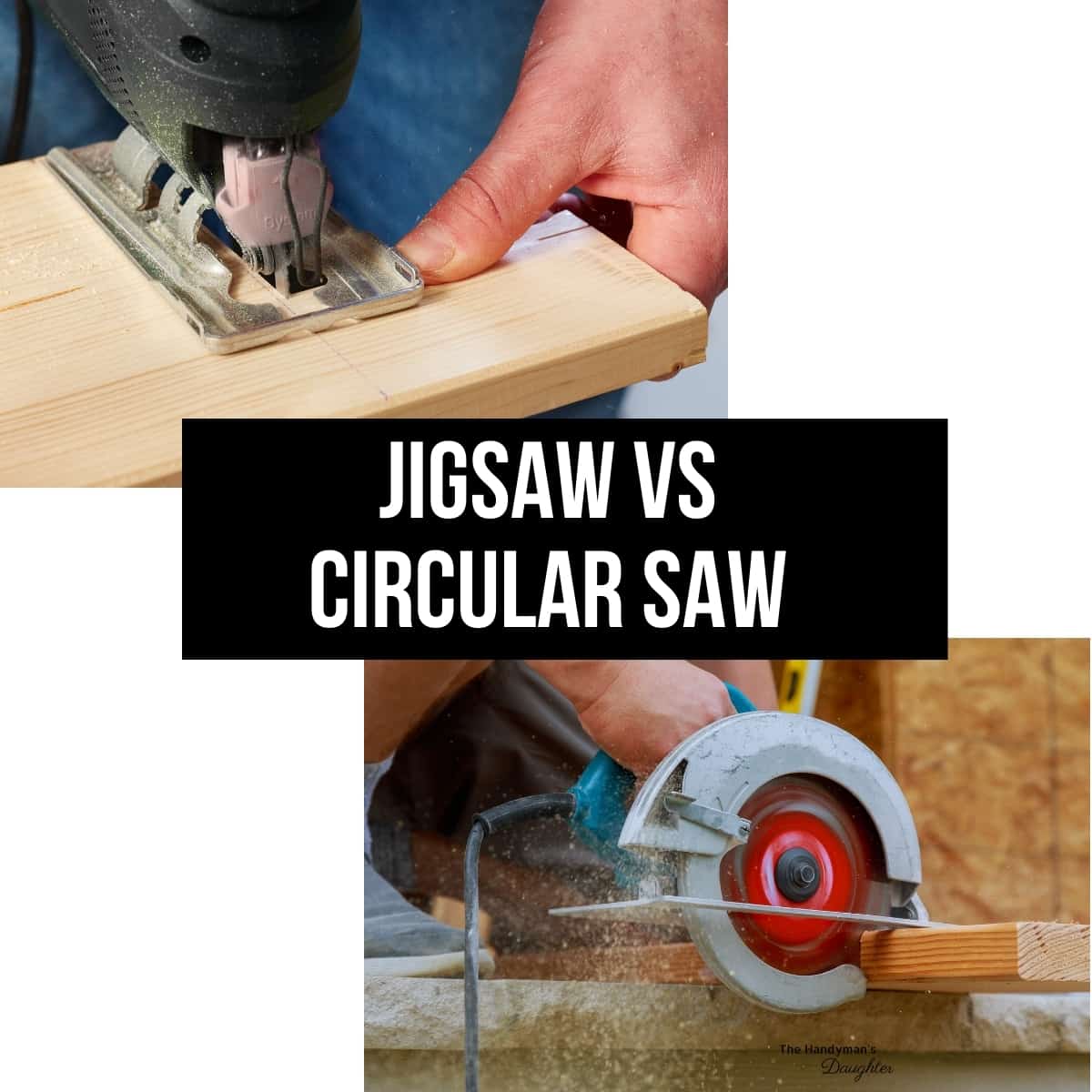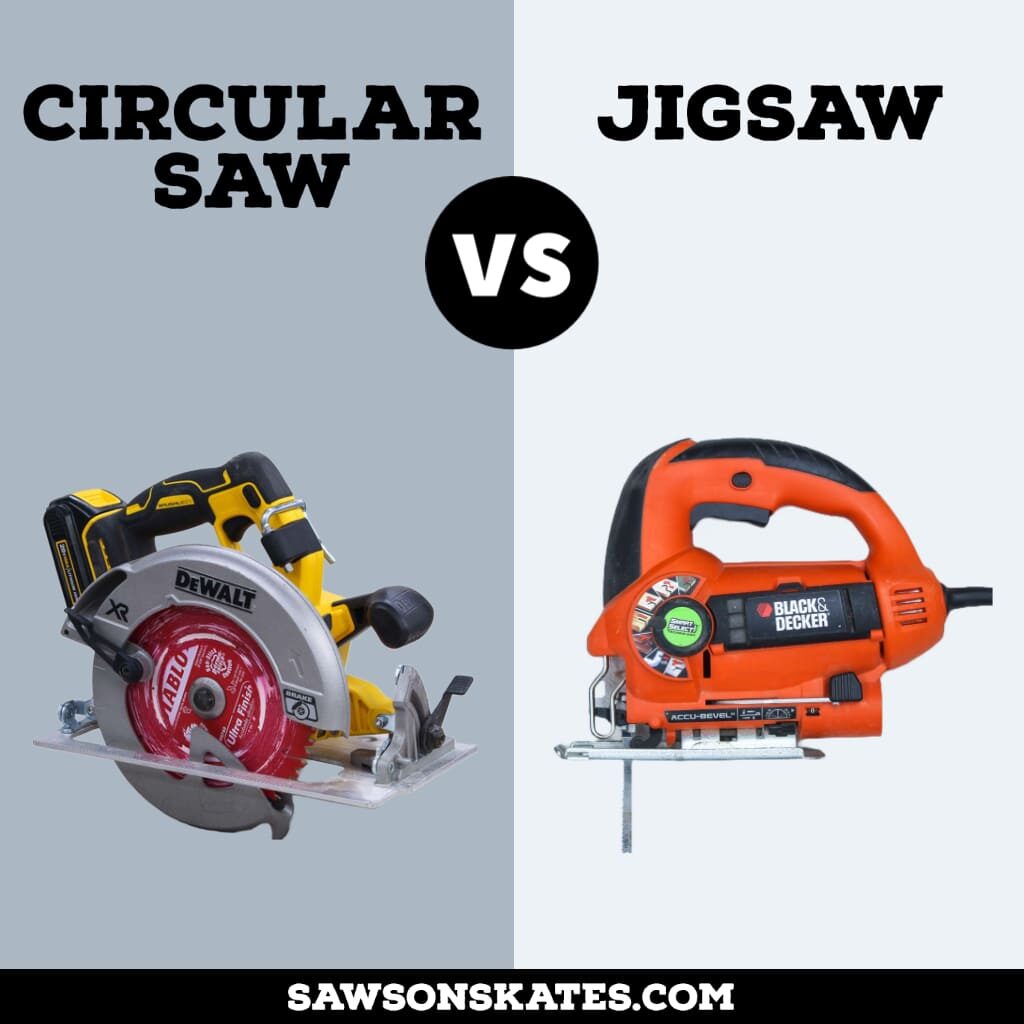Have you ever wondered if a jigsaw is the same as a circular saw? Well, let’s find out! In this article, we’ll explore the differences between these two power tools and help you understand which one is more suitable for your needs.
When it comes to woodworking or DIY projects, having the right tools can make all the difference. Some tools may seem similar, like the jigsaw and circular saw, but they actually have distinct features and purposes. So let’s dive in and discover what sets these two tools apart.
Whether you’re a budding carpenter or a DIY enthusiast, understanding the differences and purposes of tools like the jigsaw and circular saw can help you make informed decisions and tackle your projects with confidence. So let’s get started and unravel the mysteries of these power tools!

Is a Jigsaw the Same as a Circular Saw?
When it comes to woodworking and DIY projects, having the right power tools is essential. Two popular options for cutting through various materials are the jigsaw and the circular saw. While both tools have their uses, they are not the same. In this article, we will explore the differences between a jigsaw and a circular saw, their unique features, and the projects for which each tool is best suited.
1. Understanding the Jigsaw
The jigsaw is a versatile handheld power tool with a reciprocating saw blade. It is known for its ability to make precise curved cuts, intricate designs, and cutouts in a variety of materials, including wood, plastic, and metal. The jigsaw is equipped with a thin, narrow blade that moves up and down rapidly, allowing for quick and agile cutting in tight spaces.
While the jigsaw excels at cutting curves and irregular shapes, it may not be the go-to tool for straight cuts or long, straight lines. The jigsaw’s blade can easily veer off track, leading to inaccurate cuts. However, with the right technique and a steady hand, the jigsaw can still achieve straight cuts with good precision.
When using a jigsaw, it is important to choose the appropriate blade for the material you are cutting. The number of teeth and the type of teeth on the blade affect its cutting efficiency and quality. It is also recommended to use a workpiece support or guide to help maintain control and improve accuracy.
2. Introducing the Circular Saw
The circular saw is a powerful handheld or table-mounted power tool that uses a round cutting blade with teeth to make straight cuts. It is designed for speed and efficiency in cutting through various materials, including wood, plastic, and metal. The circular saw’s blade rotates rapidly in a circular motion, making it ideal for long, straight cuts and ripping large pieces of material.
Compared to the jigsaw, the circular saw offers greater cutting depth and versatility for different types of cuts, including crosscuts, bevel cuts, and miter cuts. It is commonly used in construction projects, such as framing, decking, and roofing, where precise and straight cuts are essential for a professional finish.
It is important to note that the circular saw may not be as effective as a jigsaw when it comes to making intricate curved cuts. Its large blade and fixed cutting path make maneuvering in tight spaces or cutting irregular shapes more challenging. However, with the right blade and a guide or fence, the circular saw can still achieve some curved or angled cuts.
3. Choosing the Right Tool for the Job
Now that we understand the differences between a jigsaw and a circular saw, let’s explore the best applications for each tool:
Jigsaw:
- Creating intricate designs and patterns
- Curved cuts and cutouts
- Working on smaller, more detailed projects
- Cutting openings for outlets or fixtures
- Trimming and shaping wood
Circular Saw:
- Straight cuts in long pieces of material
- Ripping large sheets or boards
- Crosscuts, bevel cuts, and miter cuts
- Building decks, fences, or other construction projects
- Cutting through thicker materials
Conclusion
In conclusion, while a jigsaw and a circular saw both serve important roles in woodworking and construction projects, they are not the same. A jigsaw is excellent for intricate cuts, curved lines, and smaller projects, while a circular saw excels in making straight cuts, ripping large pieces, and handling construction-related tasks. By understanding their unique features and applications, you can choose the right tool for your specific project and achieve professional-quality results.
Key Takeaways: Is a Jigsaw the Same as a Circular Saw?
- A jigsaw and a circular saw are both power tools used for cutting, but they have different designs and purposes.
- A jigsaw is a handheld tool that can make curved and intricate cuts, while a circular saw is a larger, stationary tool that is ideal for making straight cuts.
- When it comes to versatility, a jigsaw can handle a wide range of materials and cuts, including plunge cuts and bevel cuts.
- On the other hand, a circular saw excels at making long, straight cuts in materials like wood, metal, or plastic.
- Both tools have their own advantages and are useful for different types of projects, so it’s important to choose the right tool based on your specific needs.
Frequently Asked Questions
A jigsaw and a circular saw are two different types of power tools, each with its own unique functionalities. Below, we answer some common questions about the differences between these two tools.
1. How does a jigsaw differ from a circular saw?
A jigsaw and a circular saw differ in their cutting methods and the types of cuts they can make. A jigsaw is a handheld tool with a small, fine-toothed blade that moves in an up-and-down motion. It is primarily used for making curved or intricate cuts in wood, plastic, or metal.
On the other hand, a circular saw is a larger tool with a circular blade that rotates. It is designed for making straight cuts in materials such as lumber, plywood, or metal sheets. Unlike a jigsaw, a circular saw is not suitable for making curved cuts.
2. Which tool is better for cutting curves?
When it comes to cutting curves, a jigsaw is the preferred tool. Its small, thin blade and orbital action allow for precise maneuverability, making it ideal for cutting intricate shapes and curves in various materials. The jigsaw’s versatility enables you to create intricate patterns and designs that would be challenging with a circular saw.
Although a circular saw can make straight cuts, it is not designed for cutting curves due to its fixed blade and limited maneuverability. If you need to make curves or shape wood, metal, or plastic, a jigsaw would be the better tool choice.
3. Can a circular saw be used for plunge cuts?
No, a circular saw is not suitable for making plunge cuts. A plunge cut is when you start cutting in the middle of a material, rather than from an edge. Unlike a jigsaw, a circular saw does not have a mechanism that allows the blade to move up and down, making it difficult to initiate a cut in the middle of a material.
If you require plunge cuts, a jigsaw is the appropriate tool to use. Its up-and-down motion enables you to start cuts in the middle of a material, making it easy to create openings or notches with precision.
4. Can a jigsaw replace a circular saw?
While a jigsaw and a circular saw have different functionalities, there are instances where a jigsaw can partially replace a circular saw. A jigsaw can make straight cuts, although they may not be as precise or smooth as those made with a circular saw.
However, it is essential to note that a circular saw excels at making long, straight cuts quickly and efficiently. If your project primarily involves straight cuts, it is best to use a circular saw for optimal results. For intricate cuts, curves, or notches, a jigsaw is the go-to tool.
5. Which tool is safer to use: a jigsaw or a circular saw?
Both a jigsaw and a circular saw can be safe when used correctly and with proper precautions. However, a jigsaw may be considered slightly safer due to its smaller blade and slower cutting speed.
When using any power tool, it is crucial to follow safety guidelines, such as wearing protective eyewear, gloves, and hearing protection. Additionally, always ensure the material is firmly secured and use the appropriate blade for the task at hand to minimize the risk of accidents or injuries.

Summary
So, here’s the deal: a jigsaw is not the same as a circular saw. They may both cut things, but they work differently.
A jigsaw is like a puzzle piece that moves up and down, making curved and intricate cuts. On the other hand, a circular saw has a spinning blade that cuts straight lines through things like wood or metal.
So, remember, a jigsaw is for curves, while a circular saw is for straight lines.
